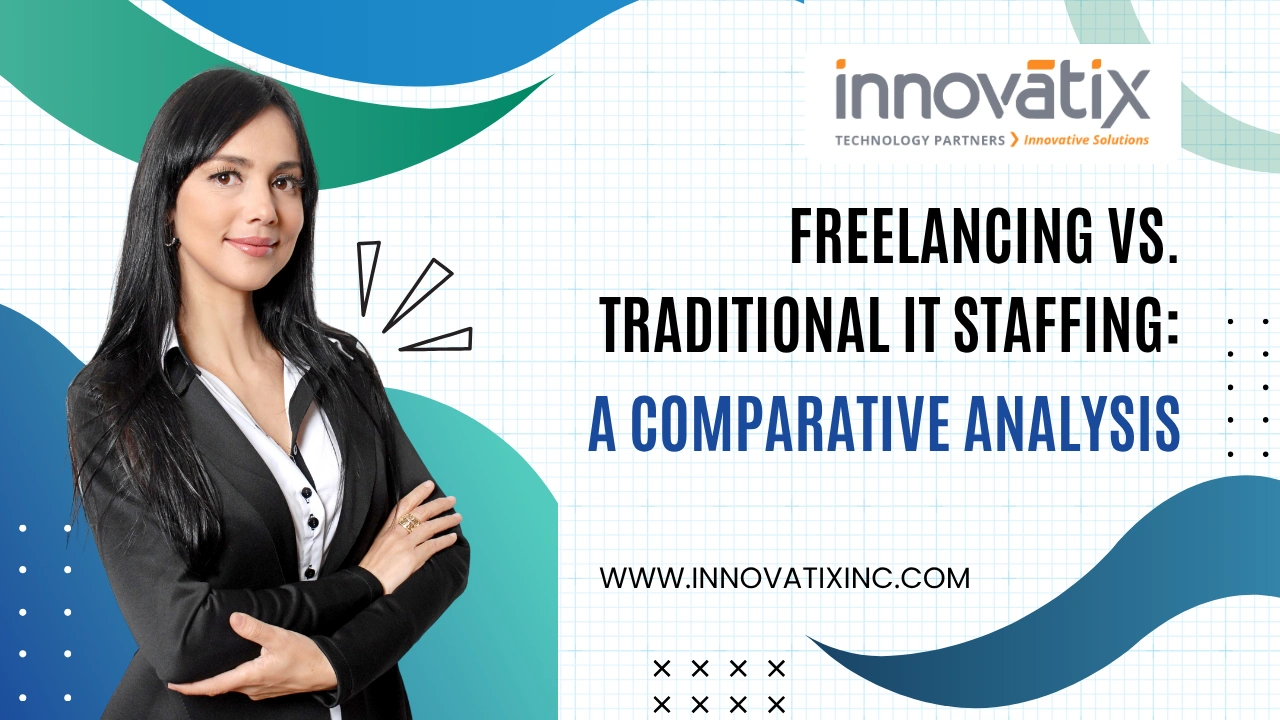Freelancing vs. Traditional IT Staffing: A Comprehensive Comparative Analysis
Businesses must adopt dynamic staffing solutions to remain competitive in the globalized and fast-evolving economy. The rise of digital transformation, remote work, and the gig economy has created a shift in how organizations source talent. From traditional full-time employees to a new wave of freelancers, businesses must weigh the pros and cons of these two staffing models to determine the best approach for their unique needs. This comparative analysis explores the benefits and challenges of freelancing and traditional IT staffing, providing a roadmap for organizations navigating this new landscape. The Rise of the Freelance Economy In recent years, freelancing has become a popular choice for many professionals, driven by the desire for flexibility, diverse work experiences, and autonomy. According to Upwork’s Freelance Forward 2023, freelancers now comprise approximately 36% of the U.S. workforce and contribute an impressive $1.2 trillion annually. This trend underscores a shift toward a more project-based, on-demand workforce. Freelancers enjoy the freedom to work with multiple clients across various industries, expanding their skills and perspectives. Platforms like Upwork, Fiverr, and Freelancer.com enable companies to hire skilled freelancers quickly and without long-term commitments. This model benefits both freelancers, who value their independence, and businesses, which can access specialized skills on demand. Key Benefits of Freelancing for Employers Challenges of Freelancing Despite its advantages, freelancing is not without challenges: Traditional IT Staffing: Stability and Structure In traditional IT staffing, companies hire employees for long-term or permanent roles, providing them with job security, structured career development, and benefits. This model remains popular in industries where data security, workflow consistency, and intellectual property protection are paramount. Advantages of Traditional Staffing Drawbacks of Traditional Staffing Freelancing vs. Traditional IT Staffing: A Synergistic Approach Rather than choosing between freelancing and traditional IT staffing, many organizations are adopting a hybrid workforce strategy that combines the strengths of both. This synergistic approach allows companies to maintain a stable core team while accessing freelancers for specific projects. Building a Hybrid Workforce Strategy Conclusion Analysing freelancing vs traditional IT staffing and making decisions is not an easy task and needs to be done strategically considering immediate as well as long term organizational objectives. Seeing how each model has its own sets of advantages and disadvantages applies to companies such as Innovatix making it possible for the company to come up with an elaborate workforce strategy that can engage talents and ultimately propel the company’s performance in today’s fast changing market landscape. Leading for providing customize IT solutions, Innovatix, brings versatile staffing services to the forefront to meet the complex needs of the dynamic market. Innovatix has a strong network of over 450 professionals with onsite and virtual staffing solutions with various industries to serve. This flexibility enables companies to effectively navigate the dynamic landscape of freelancing vs. traditional IT staffing. Innovatix helps businesses adjust quickly to changing demands without affecting operational efficiency by connecting the right talent with the right opportunities through strong relationships. Innovatix offers complete staffing services that will accommodate any employee demand: stability in traditional employment, or agility in freelance experts. We’d love to show you how Innovatix can help you improve your workforce strategy, so contact us today.









